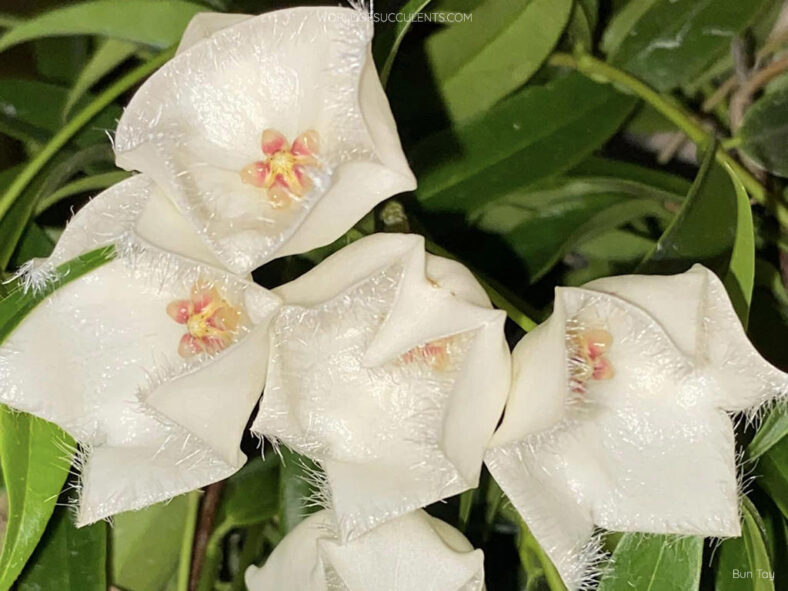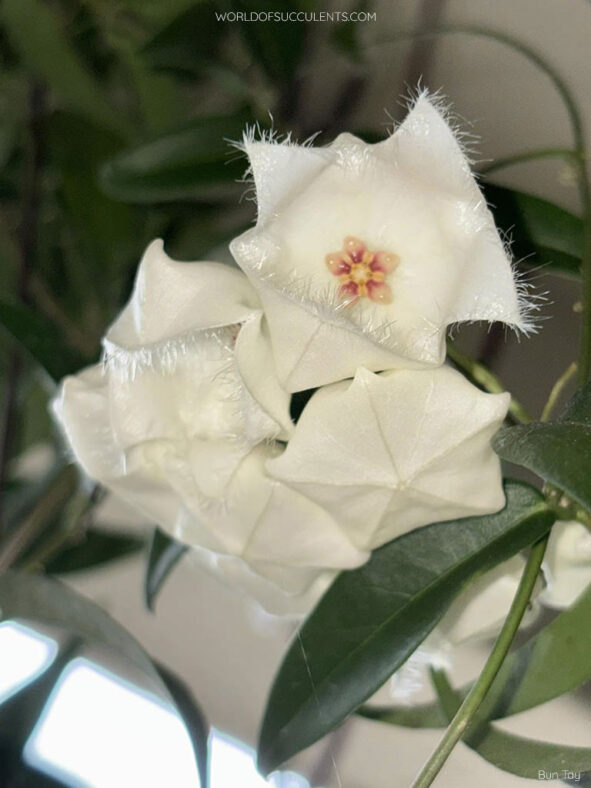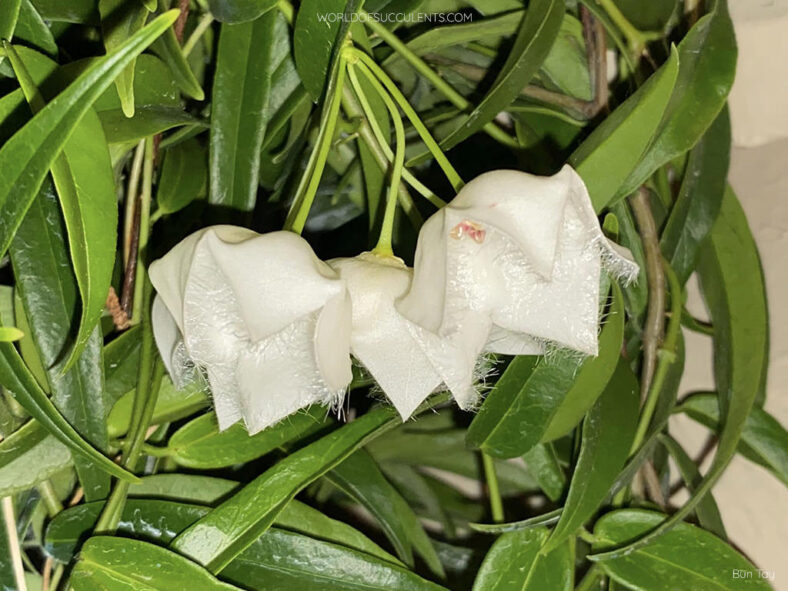Hoya paradisea was first discovered in 2011 by Nathalie Simonsson Juhonewe, also known as Nathalie Evelinadotter Simonsson, and Fredrik Juhonewe in lowland primary forest near Dahamo village in the Western Province of Papua New Guinea. The plant was assigned the accession number NS 11-159. In 2021, a form of this species was discovered near the city of Timika in the Central Papua province of Indonesia, which received the accession number IM-04.
Scientific Name
Hoya paradisea Simonsson & Rodda
Scientific Classification
Family: Apocynaceae
Subfamily: Asclepiadoideae
Tribe: Marsdenieae
Genus: Hoya
Etymology
The specific epithet "paradisea" (pronounced "par-uh-DIS-ee-uh") refers to the rainforests in which this species is endemic, sometimes called Paradise forests.
Origin
Hoya paradisea is native to New Guinea, specifically in Papua New Guinea and the Central Papua Province of Indonesia. It grows as an epiphytic climber in lowland, primary riverine forests, often found close to the ground or near streams on trees and shrubs.
Description
Hoya paradisea is an impressive plant that has long, slender stems and green, lance-shaped leaves. The main difference between the two forms is in their leaves. The leaves of the form NS11-159 are lighter, more tender, and broader compared to those of IM-04. When not in bloom, this species can easily be mistaken for several other New Guinean species that have similar plain green, leathery leaves, including Hoya apoda, Hoya evelinae, Hoya leucantha, Hoya oreostemma, and Hoya solaniflora.
The fragrant flowers of Hoya paradisea are hairy, with a white corolla that may sometimes have a pink hue, along with a yellow corona that shows a red tint near the bases of the lobes. They usually appear in summer, do not fully open until midday, and last only a couple of days.

How to Grow and Care for Hoya paradisea
Light: This plant prefers bright, indirect sunlight indoors. Although it can tolerate lower light levels, it may become weak and leggy if the light is too low, producing fewer leaves and flowers.
Soil: Well-draining soil that provides excellent aeration and does not hold too much water is most important for growing a healthy plant.
Temperature: Hoya paradisea thrives in hot and humid climates, so keep it away from drafty windows and doorways during the colder months. It is hardy in USDA Plant Hardiness Zones 11a-11b, which have average annual extreme minimum winter temperatures ranging from 40°F to 50°F (4.4°C to 10°C).
Watering: This plant is sensitive to overwatering. Soak the soil thoroughly during the spring and summer, but allow it to dry out before watering again. Otherwise, you will increase the risk of root rot, and your plant will not be happy. It is relatively dormant during the fall and winter and needs only moderate watering.
Fertilizing: While Hoya paradisea is not a particularly heavy feeder, it can benefit from a high-potassium fertilizer diluted to half-strength every two weeks during the growing season.
Repotting: As an epiphyte, this plant has a shallow root system and needs a deep container. It also does not require frequent repotting. It prefers to be slightly rootbound. Repot the plant in spring only if it has outgrown its container.
Propagation: Although layering is the easiest method, propagation by stem cuttings is the most popular method for Hoya paradisea. Leaf cuttings can be more challenging, and starting the plant from seeds is the simplest yet most time-consuming method. For best results, take cuttings only when the plant is actively growing, and sow the seeds in spring and summer.
Learn more at How to Grow and Care for Hoya.
Toxicity of Hoya paradisea
Hoya paradisea is considered non-toxic and safe around kids and pets.
Links
- Back to genus Hoya
- Succupedia: Browse succulents by Scientific Name, Common Name, Genus, Family, USDA Hardiness Zone, Origin, or cacti by Genus
Photo Gallery
Click on a photo to see a larger version.


